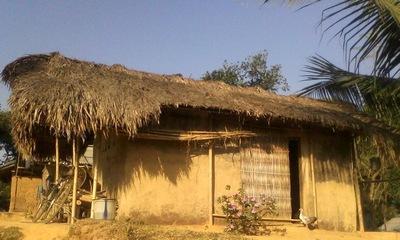
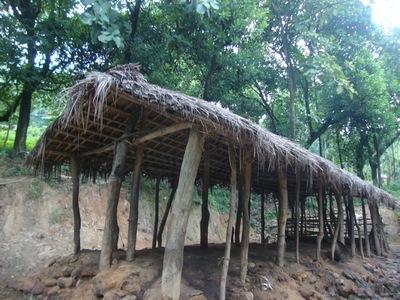
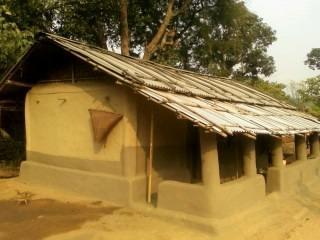
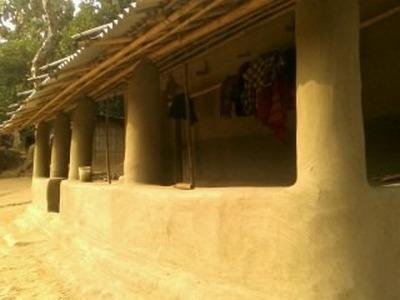
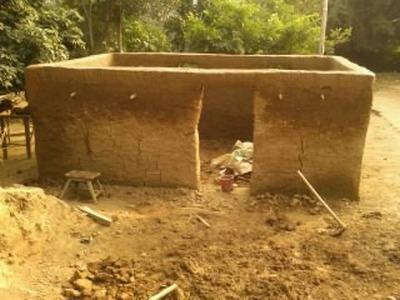
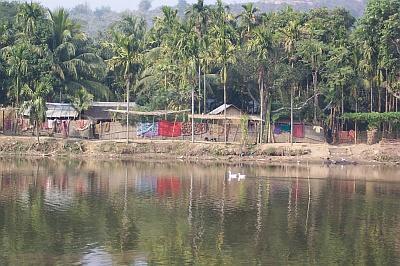
Each Hajong village consists of 20 to 40 households. They settled mostly in the plain areas and small hills. Most people can speak Garo, Assamese and Bengali in Meghalaya, Hindi in Arunachal, and Bangla in Bangladesh. They share a good relationship with each family of the same village, and other castes as well. Those who don’t have a good relationship are cast out from the village. They exchange opinions, visits, food items, services etc. with each other. But present day people seem to have forgotten all these. They strictly adhere to the rules or customs laid down by their ancestors. But they are unaware of the word ‘sustainable development'. A few are aware of it, but they don’t spread it around. They lack a burden for their fellow brothers and don’t take responsibilities to uplift their own brothers. There are a few Hajong NGO’s formed to bring development among the Hajong society, but it can be observed that none are actively working for others, each thinking only for his own benefit. There is hardly any unity among each NGO. It is also said that they hardly talk about development during their annual meetings. So steps must be taken to change this attitude or mindset of the people, especially the younger generation, so as to achieve growth.
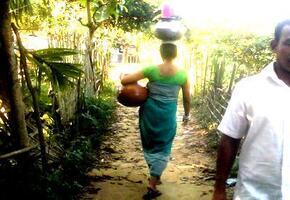
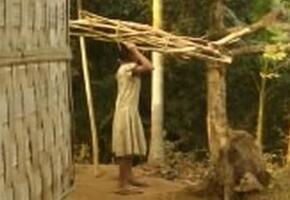
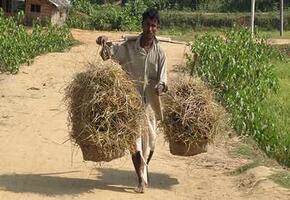
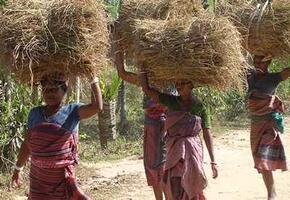
Literacy rate:
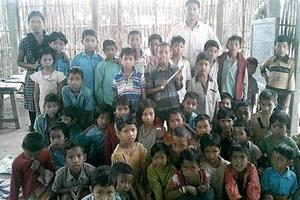
Hajongs’ literacy rate is still-low despite an increase in school facilities. It has only helped increasing enrollments. Enrolment among the girls has increased, but they still face many hurdles in pursuing their education. This is seen among those children who belong to below poverty line families. In order to make ends meet, parents are reluctant to send their children to school leading to high illiteracy. Children are forced to abandon schools to collect firewood, plough the field, go fishing, babysitting, and help the parents at home, especially the girls who are valued as labourers. This has led to a large number of child dropouts from schools. Surveys reveal that dropout increases between the age group of 6-15 years. There is no motivation among the parents to encourage their children to pursue their studies. This can be understood as the cost of educating a child is skyhigh and they lack a budget for funding education. Many children of disadvantaged families drop out of schools and migrate to other places to earn a living. Some end up as shopkeepers and some end up in rich houses as domestic helpers to contribute to the family income. But this is changing since 21st century, and more and more people are migrating to towns for higher studies due to inaccessibility and lack of adequate facilities, and employment is increasing as a result. Another thing is, the schools these children go to, lack quality teachers or teacher absenteeism, infrastructure, funds, and they are not taught in the language they speak at home.
Religion:
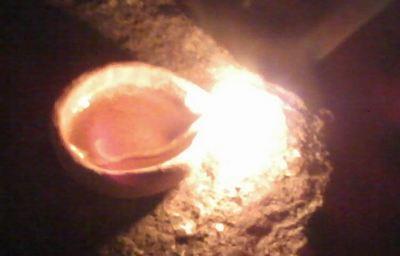
Agriculture:
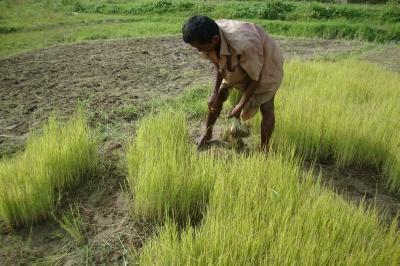
The majority of the Hajong population is still living on agriculture and rice cultivation is important as it provides the staple food. Jhum cultivation is not common. Most Hajongs possess some pieces of agricultural land, but now due to laziness people are selling it and ownership of land is decreasing. Those who don’t possess land earn their living as a daily wage labourer. They are hired by other land owners since they are masters in rice cultivation. Cultivation depends upon rain fall. If rain fall is good, it brings a good harvest. People plough the land with the help of cows or buffaloes as power tillers or tractors are unaffordable. People also cultivate maize, jute, mustard seed, potato, sweet potato, yam, onion, egg plant, cabbage, garlic, tomato, beans, gourd, chilli, cauliflower, ladies-finger and eatables. But now because of laziness and drunkenness, people are hardly cultivating all kinds of vegetables. Instead they are buying from the market imported from other parts. People give the land to someone for cultivation of rice and then share the crops on equal ratio. Those who produce rice in abundance would sell some of their rice to buy other necessary things and save some for the rest of the year. But this is not so with everyone. Some who could not produce much could feed themselves only for 4 to 5 months, and the rest of the year they have to struggle hard as labourers. Even earning as wage labourers is not easy. Getting work in rural areas is hard. So they have to migrate temporarily for getting work and wages. Now a days after harvesting and threshing, people would immediately sell some of their rice for money, and in the remaining years they would have to buy rice from the same person whom they sold to, and that too, for a higher price.
Agriculture has also become difficult due to a lack of resources. Rivers are drying up day by day with non-stop deforestation and jhum cultivation. As livelihood opportunities are decreasing with increasing population youths are leaving the villages for better education and job opportunities.
Dress and ornaments:
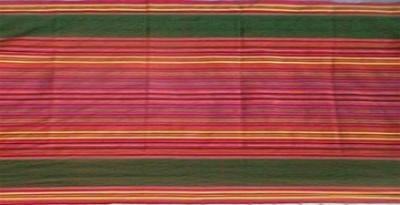
Hajong women are masters in traditional weaving. Women wear a colourful red dress called ‘pathin’, made by themselves, and a red blouse, and men wear a towel-like cloth called ‘gamsa.’ Females also used to wear earrings, noserings, siver necklaces called hasili and hârsora, finger ring, and bangles called kharu in the earlier age, but all those almost disappeared in the present age as people didn’t value it to
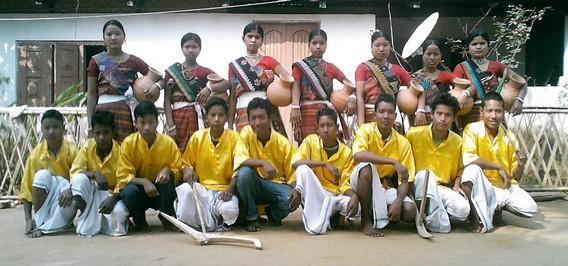
preserve for identity. Now a days both men and women are making traditional dresses of other tribes, and sell them in the market. This has given them an alternate way of earning. Some rich families, especially the Garos have set up a place for weaving in their own house and Hajong women are employed there.
Medicine:
The majority of people use traditional medicines as these are affordable and widely available. This works for a few sicknesses, but not for all. They visit hospitals or doctors only when traditional medicines don’t bring any relief. This is understandable for visiting a hospital is not so cheap even in the rural areas.
Food:

Rice is the main food for Hajongs along with sticky rice. It is said that in earlier times people cooked rice inside the bamboo called dingpora. Sticky rice and turtle is the main dish among the Hajong tribes, and ground rice curry called leba hak. Boiled food is not common among the Hajongs. People prefer oil and traditional sodium carbonate made from banana trunk called khar. People eat all kinds of vegetables and meat available in the market, except ‘cow’ which is considered sacred. Long ago pigs were not eaten as it is considered unclean, and they weren't even reared. But now you can see the people rearing pigs in few places, not just for eating, but for making a profit.
Festivals:
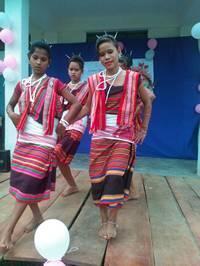
Cor-khela, pusnâ porbo and pusnâ are the festival Hajongs celebrate. During cor-khela a group of people from one village will dance and sing cultural songs at night and go around from village to village and stop at dawn. It is an event where teanagers choose life partners for themselves. They will secretly watch the dancing from inside the house through a hole. After that they informed their parents, and if the parents are satisfied they arrange the marriage. During pusnâ people prepare different kinds of traditional bread with ground rice, scraped coconut, banana, juice extracted palymyra palm. Some of these breads are prepared with oil, and some are steamed in bamboo, banana leaves, etc., and people are invited. The names of the breads are pat pithâ (steamed), batul pithâ (steamed), tel pithâ (fried), laddu, huknâ pithâ (dry fried), etc. Pusnâ porbo is celebrated with singing and dancing in a particular place from evening. People from different villages gather and compete with each other by wearing traditional dresses, designed and weaved beautifully on their own.
Marriage:
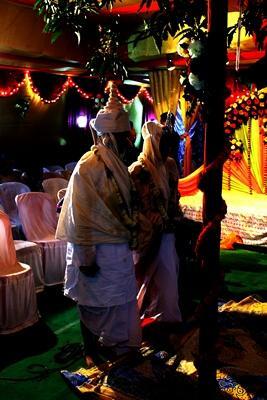
How did Hajongs marry from the beginning? The present generation has no answer. It is lost. Hindu version is practiced now a days. Hajongs marry only within their own tribe. Inter-tribe marriage is strictly restricted. Marriage takes place both at the groom’s place as well as bride’s place. Marriage is generally arranged by parents. Marriage by elopement is also restricted. If someone is found to have eloped, the matter is brought to the notice of the village headman and a fee is charge at the time of settlement. The majority of the women marry when they are between 15 and 18 years old. But this is changing in the present age. Women don’t marry until they attain maturity. After marriage the wife stays at her husband’s place. On the occasion of marriage, the bride wears a sari, and the groom wears a dhoti.
On the occasion of marriage, there are 7 people called 'ayrok' and the wedding is perform according to their orders.
On the occasion of marriage, 'dhuni bap dhuni maw' is appointed and they does the job of the parents.
On the occasion of marriage, length of the groom's hand was measured and four banana trees were fixed at four corners, equivalent to groom’s height, at the place where the marriage is to be performed. Marriage takes place at night with loud live music. Invitees start arriving before sunset (women in there best). They are served snacks and tea, and dinner at night. Ayrok make their entrance dressed in pathin, followed by the groom in white dhoti, and chased by photographers and videographers. He walked a few steps to an embellished seat. The bride joined him after sometime.
After the arrival of the groom and bride, will be given some time to rest. Later ayrok will take them for bathing. They will be brought back to their original seats, and the marrigae starts, steers by bamon till the end. No sacrifices were made on the occasion of marriage. Food is offered to the guests before the marriage is performed. The marriage continues till next day for those who could not come during the exact occasion and it is called "left-over marriage". Once the marriage is over, after some days the families and friends (where the marriage took place) visit the other distant families to show the establishment of a new relationship, and this is called "new relative".
Traditionally, when girls were married off to men, dowry is not practiced. Now a days some men from poor background ask the parents of the women to contribute few amounts to meet the wedding expenses. The youths believed that it is not good to demand anything by anyone. They hope to take the tradition of their parents. The youth spreads this message, "Everyone deserves all the joyous festivities and merry-making, but while doing that, let's try and remember that it is not a competition or opportunity to show our status. Keep in mind that it is an event that one pledge oneself to another. Let this beauty and meaning live forever and ever.